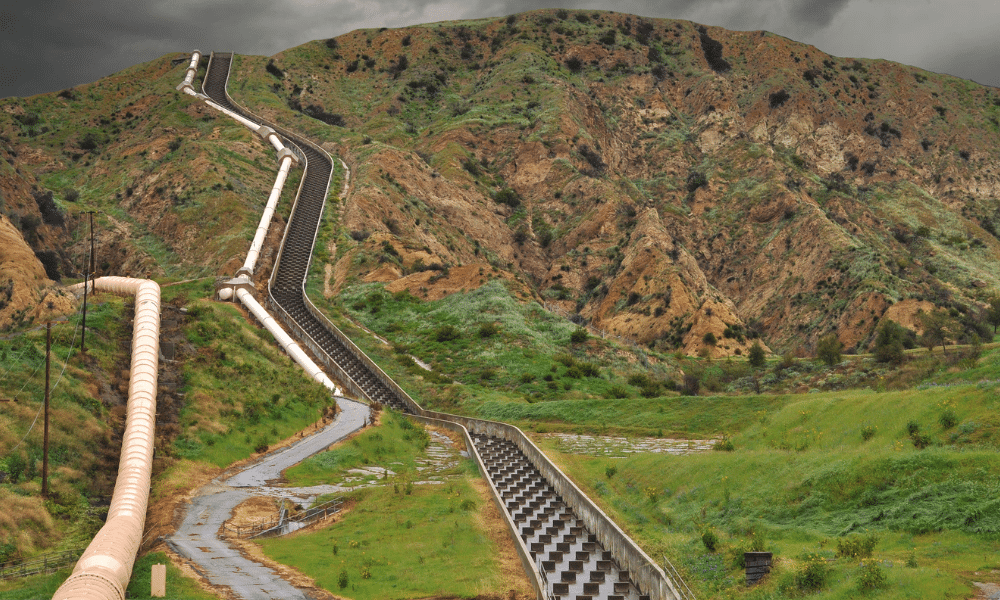Los Angeles’s history is deeply intertwined with its quest for water, a vital resource that has shaped the city’s growth and development. As LA transformed into a burgeoning metropolis in the late 19th and early 20th centuries, the city’s limited water supply became a critical issue. The local sources, including the Los Angeles River, could no longer meet the demands of the rapidly expanding population and industries. This early water crisis highlighted the need for a sustainable solution to support the city’s future.
Amidst these challenges, visionary leaders like William Mulholland emerged, spearheading efforts to secure a reliable water supply for Los Angeles. Mulholland’s innovative approaches and determination were instrumental in addressing the city’s water woes, ultimately leading to the ambitious project of the Owens Valley Aqueduct. This monumental engineering feat alleviated the immediate water shortage and set the foundation for LA’s modern water management system. The early water crisis underscored the importance of foresight and planning in urban development, lessons that continue to guide water resources management in Los Angeles today.
The Early Water Crisis in LA
In the late 19th and early 20th centuries, Los Angeles experienced rapid growth. People flocked to the city, drawn by promises of opportunities and good weather. With this growth came a significant challenge: the city’s water sources quickly depleted. Early water sources like the Los Angeles River couldn’t meet the increasing demand.
The city’s burgeoning population and expanding industries put immense pressure on the available water resources. As local supplies dwindled, a comprehensive water management solution became urgent. The situation was dire, with drought conditions exacerbating the scarcity of water. These challenges underscored the necessity for a long-term strategy to secure a reliable water supply.
Recognition of the Problem
City planners and water engineers recognized the urgency of finding sustainable water sources. Shortages threatened future growth and even the health of residents, so engineers began searching for long-term solutions to ensure a steady water supply for the city’s burgeoning population.
The mounting crisis led to the formation of committees and task forces dedicated to water resource management. These groups conducted extensive studies, exploring various options for addressing the shortage. Public awareness campaigns also highlighted the severity of the situation, rallying support for innovative solutions. Recognizing the problem marked the first step toward implementing comprehensive water management strategies.
The Vision of William Mulholland
William Mulholland, a self-taught engineer, became the chief of the Los Angeles Department of Water and Power (LADWP). He played a pivotal role in addressing the city’s water crisis, and his vision and determination made him a key figure in water engineering.
Mulholland’s contributions went beyond engineering; he was a charismatic leader who galvanized support for ambitious projects. His hands-on approach and deep understanding of water resources earned him respect and credibility. Mulholland’s career and achievements are a testament to his enduring impact on water management in Los Angeles. His legacy includes not just the aqueduct, but also the modern infrastructure that supports the city’s water needs.
Planning of the Owens Valley Aqueduct

Owens Lake
Mulholland discovered Owens Valley, over 200 miles away, as a potential water source. He believed the valley could solve LA’s water crisis. Detailed planning and engineering began, overcoming significant challenges. The aqueduct is needed to transport water across deserts, mountains, and valleys.
The project’s scope required a blend of innovative engineering and practical problem-solving. Early surveys and feasibility studies laid the groundwork for a monumental achievement. Mulholland’s team worked tirelessly to design a system that harnessed gravity flow, minimizing the need for energy-intensive pumping. The planning phase also included securing legal rights and negotiating with stakeholders, ensuring the project’s viability and sustainability.
The Remarkable Construction Timeline
The Owens Valley Aqueduct was completed in just five years, a remarkable feat. Such quick construction was unheard of, showcasing the engineers’ and workers’ determination and ingenuity. The project’s ability to adhere to this timeline demonstrated exceptional project management and coordination among diverse teams.
The project’s success required meticulous planning and execution, with every stage carefully orchestrated. Rapid construction sets new standards for large-scale engineering projects, inspiring future infrastructure developments. Innovators studied this project to replicate its efficiency and effectiveness in other significant engineering endeavors.
Starting the Project
The project started with groundbreaking ceremonies, marking the beginning of a monumental task. Local laborers and immigrants joined forces to build the aqueduct. The construction effort quickly turned into a massive project employing thousands. This collective effort highlighted the importance of community involvement in large-scale projects.
Communities along the construction route experienced economic benefits as jobs were created and local businesses flourished. The project’s commencement symbolized hope and progress, as it promised to address the growing water crisis in Los Angeles. This communal spirit was integral to overcoming the numerous challenges faced during construction.
Engineering Feats
The aqueduct stretches over 233 miles, an engineering marvel that uses gravity to transport water without pumps. This ingenious design saves energy and maintenance costs. Engineers used innovative techniques to overcome natural obstacles like mountains and deserts. The gravity-based system minimized operational expenses and demonstrated sustainable engineering practices.
The engineers’ creativity was showcased by the use of tunnels, siphons, and canals to navigate the challenging terrain. Each segment of the aqueduct reflected careful consideration of geological and environmental factors. This innovative approach ensured the aqueduct’s reliability and efficiency over its long course, providing a model for future water infrastructure projects.
Challenges Faced
Construction faced numerous challenges, including harsh environmental conditions and political hurdles. Workers toiled in extreme heat and rugged terrains. Political opposition and controversies also surfaced, adding complexity to the project. Navigating these challenges required resilience, adaptability, and innovative problem-solving.
The project also faced labor strikes and logistical issues, testing the team’s ability to maintain momentum. Despite these setbacks, the collective determination of the workforce and effective leadership kept the project on track. These difficulties underscored the immense scale and ambition of the undertaking, highlighting the human spirit’s perseverance in overcoming adversity.
Peak Employment and Workforce Impact
At construction’s peak, up to 5,000 workers were employed, highlighting the project’s massive scale. This large workforce was essential for completing the aqueduct on time. The project provided jobs and boosted the local economy. The influx of labor transformed the social and economic landscape of the surrounding areas.
The diverse workforce included skilled engineers, laborers, and support staff, all contributing to the project’s success. The economic ripple effects included increased demand for goods and services, benefiting local merchants and service providers. This period of employment and economic activity they had lasting positive effects on the communities involved, fostering growth and development.
Impact on Owens Valley
Before the aqueduct’s construction, Owens Valley was a flourishing ecosystem with vibrant agriculture. The Owens River sustained local farms and communities, creating a self-sufficient system. The region’s natural beauty and agricultural productivity were well-known, making it a thriving area for farming and living.
The construction of the aqueduct drastically altered this idyllic setting. Water that once nourished crops and supported the local economy was redirected to Los Angeles. Farmers and residents faced declining water levels, impacting their livelihoods. This transformation highlighted the profound effects that large-scale infrastructure projects can have on local environments and economies.
Changes Brought by the Aqueduct
The diversion of the Owens River water transformed the valley dramatically. As a result of the aqueduct, Owens Lake, once a vibrant body of water, dried up. This led to significant environmental changes and challenges. The ecosystem that once flourished began to deteriorate, affecting local wildlife and plant life.
The drying up of Owens Lake also led to severe air quality issues due to dust storms. These environmental challenges prompted ongoing efforts to mitigate the damage. The changes brought by the aqueduct serve as a stark reminder of the complex interactions between human activities and natural ecosystems, emphasizing the need for sustainable practices.
Controversies and Legal Battles
Early opposition to the aqueduct emerged from local farmers and residents. Legal battles over water rights ensued, becoming long-standing issues. The controversies highlighted the delicate balance between urban needs and rural sustenance. These disputes illustrated differing perspectives on resource allocation and environmental responsibility.
The legal battles continue to influence water management policies today. Various stakeholders have sought justice and resolution, shaping California’s legal framework governing water rights. The ongoing nature of these disputes underscores the complexity of managing shared natural resources, requiring continuous dialogue and negotiation.
Economic Investment in Environmental Mitigation
To address environmental issues, LADWP invested over $2 billion in dust control measures for Owens Lake. This investment highlights the ongoing efforts to mitigate the environmental impact. These measures aim to improve air quality and restore some balance to the ecosystem. The efforts include innovative techniques like spreading gravel and using water-efficient methods to stabilize dust.
These investments reflect a broader commitment to sustainability and environmental responsibility. By investing in long-term solutions, LADWP aims to minimize the aqueduct’s environmental footprint. The success of these measures can serve as a model for other regions facing similar challenges, demonstrating the importance of proactive environmental management.
The Aqueduct’s Role in Modern LA
Today, the Owens Valley Aqueduct plays a pivotal role in meeting LA’s water demands. The aqueduct delivers approximately 200 million gallons of water per day to Los Angeles, which is vital for sustaining the city’s growing population and industries. Los Angeles would struggle to support its residents and economic activities without this supply.
The aqueduct’s importance extends beyond quantity; it ensures water quality and reliability. The water transported is crucial for daily life, agriculture, and business operations. This infrastructure is key to Los Angeles’s continued growth and development. The aqueduct remains integral to the city’s fabric, symbolizing the ingenuity required to support such a vast urban area.
Updates and Maintenance
Modern efforts focus on maintaining and upgrading the aqueduct to ensure efficiency. Technological advancements have been integrated to improve water management. Regular maintenance is essential to prevent disruptions in the water supply. Advanced monitoring systems and automated controls enhance the aqueduct’s functionality.
These updates are necessary to meet contemporary environmental standards and regulations. Continuous advancements help the system adapt to changing needs and conditions. Scheduled maintenance ensures that the aqueduct operates at peak efficiency, reducing the risk of failures or water loss. Investments in infrastructure maintenance safeguard this vital resource for future generations, ensuring a stable water supply for the city.
The Importance of Continuous Improvement
Efforts to enhance the aqueduct’s performance are ongoing, ensuring it meets future demands. Innovations and upgrades are crucial for maintaining a reliable water supply. These measures aim to extend the aqueduct’s lifespan and efficiency. Continuous improvement practices keep the infrastructure resilient and adaptable.
Future-proofing the aqueduct involves leveraging new materials and technologies. Sustainable practices and innovations enhance water conservation and distribution. By focusing on continuous improvement, LA can ensure that its water management system remains robust and capable of handling increasing demands. This proactive approach supports the city’s future growth and sustainability efforts.
Environmental and Social Impact
Efforts to rehabilitate Owens Valley’s ecosystem continue, focusing on sustainable water management. Projects aim to restore some of the natural balance lost due to the aqueduct. Environmental policies play a pivotal role in these efforts. These initiatives seek to mitigate the environmental footprint left by water diversion.
Restoration projects include re-watering certain areas and introducing sustainable farming practices. Collaborative efforts between environmental groups and government agencies strive to restore wildlife habitats and improve biodiversity. These actions underscore the commitment to environmental stewardship and sustainability. Ensuring the health of Owens Valley’s ecosystem is crucial for long-term ecological balance.
Community and Cultural Effects
The aqueduct’s construction significantly impacted the Owens Valley community and Indigenous populations. Ongoing dialogue between LA and valley residents aims to address these issues. Understanding the cultural impact is essential for future projects. Preserving Indigenous heritage and community interests remains a priority.
Efforts to engage with affected communities include cultural preservation projects and economic development initiatives. Building trust and fostering cooperation are essential for reconciling past grievances. These efforts contribute to a more inclusive approach to water management and infrastructure projects. Recognizing and respecting cultural heritage is key to sustainable and ethical development.
The Broader Implications
Balancing urban water needs and environmental sustainability remains a key challenge. Policies and innovations must consider both aspects to ensure long-term viability. Sustainable water management is crucial for future growth and environmental health. Achieving this balance is essential for fostering resilience and adaptability.
Integrated water management approaches combine technology, policy, and community involvement. These strategies aim to create a resilient water supply system capable of adapting to climate change and population growth. The lessons from the Owens Valley Aqueduct highlight the need for holistic and forward-thinking water management practices. Ensuring sustainable water use is vital for the future well-being of both urban and rural areas.
Securing Water for LA’s Growth
Strategic plans focus on water conservation and sustainability to secure LA’s future water supply. Reducing waste and optimizing resources are central to these plans. Community involvement and awareness are also critical components. Public education campaigns and community programs promote water-saving practices.
These strategic plans include investing in new infrastructure, such as recycled water systems and stormwater capture projects. Collaboration with regional partners enhances resource sharing and efficiency. LA can ensure a resilient and sustainable water supply by implementing comprehensive strategies. Engaging the community in conservation efforts fosters a culture of sustainability and responsible water use.
Innovations in Water Technology
Emerging technologies promise to complement or replace parts of the aqueduct. Renewable energy integration offers potential benefits for water management, and these innovations could enhance efficiency and sustainability. Innovative grid technology and advanced sensors can improve monitoring and distribution efficiency.
Research and development efforts focus on creating water-saving technologies and sustainable practices. Innovations such as desalination, water recycling, and advanced filtration systems offer promising solutions. Embracing these technologies ensures that LA can meet future water demands while minimizing environmental impacts. Investing in innovative water technology is crucial for the city’s long-term water security.
LA’s Commitment to Sustainable Water Use
LA aims to reduce its reliance on imported water by 50% by 2035. This goal underscores the city’s commitment to sustainable water use. Achieving this will require continued innovation and community cooperation. Public-private partnerships and cross-sector collaboration are essential for success.
Initiatives include expanding local water supplies through groundwater recharge and water recycling programs. Conservation efforts and policy reforms support sustainable water management. LA’s commitment to reducing reliance on imported water reflects a broader dedication to environmental stewardship and resilience. These efforts contribute to a more sustainable and secure water future for the city.







